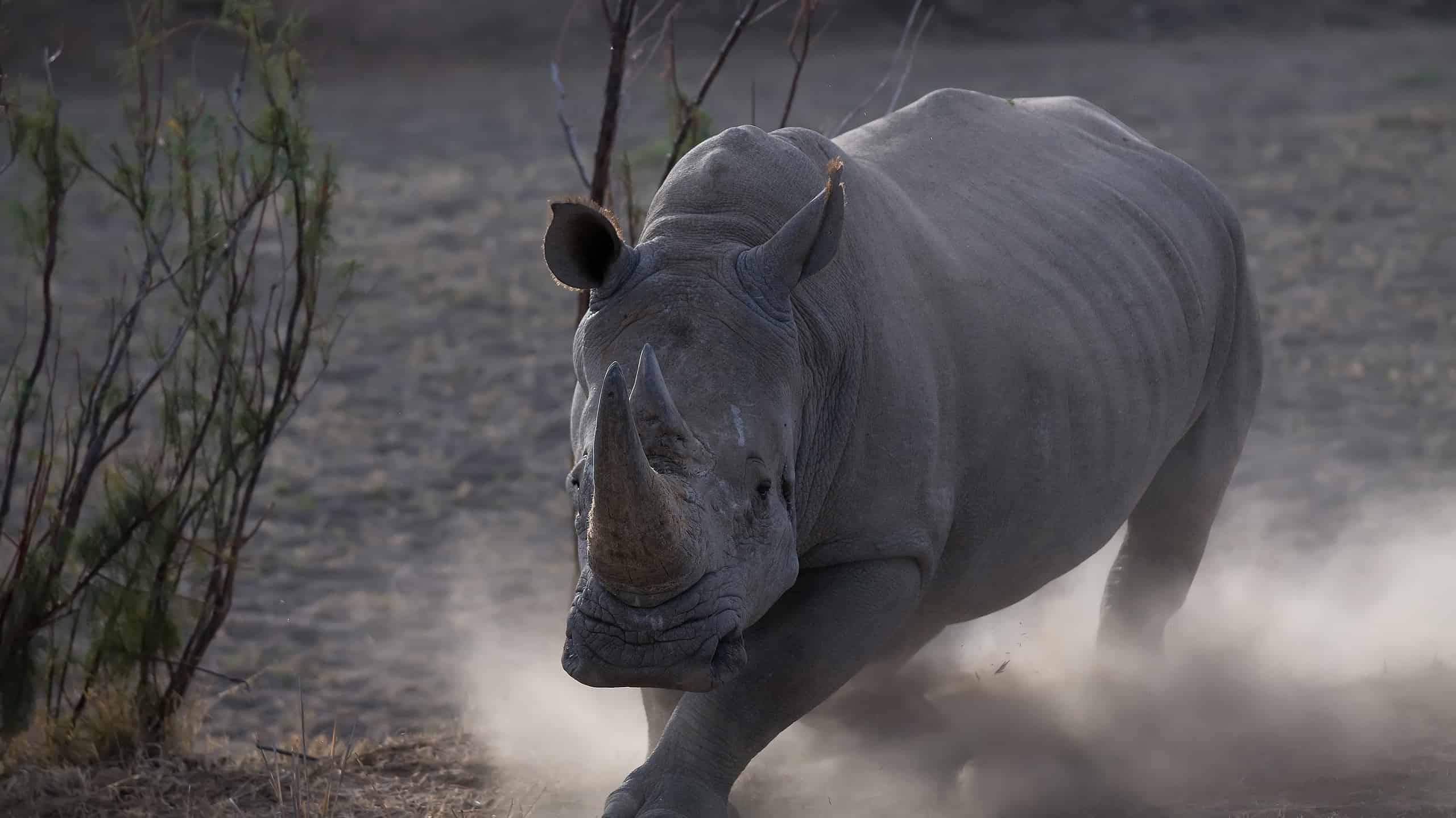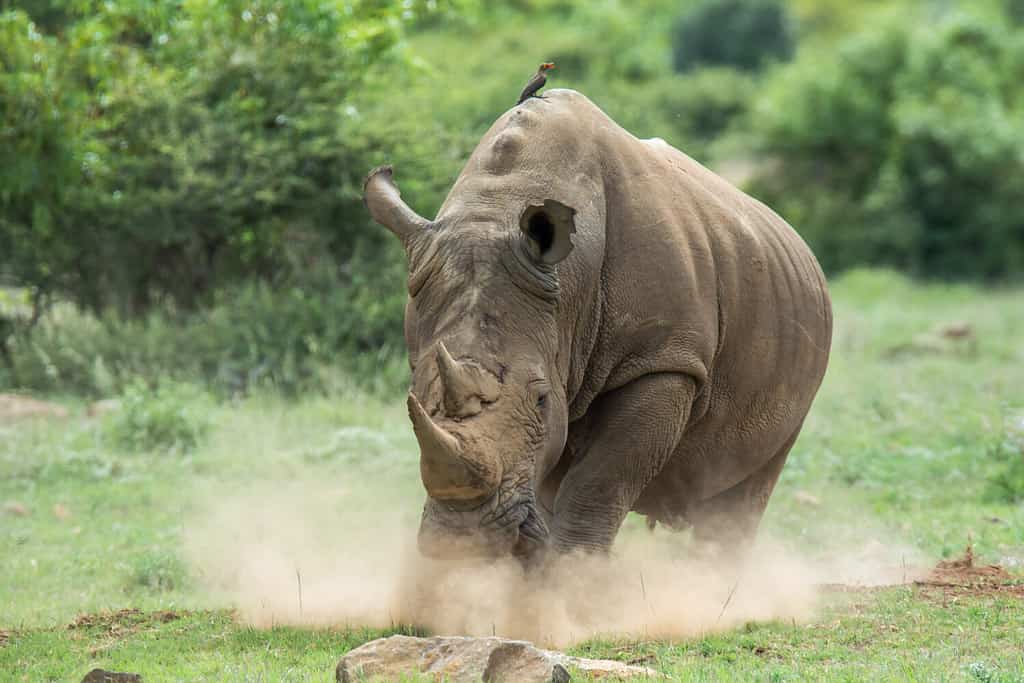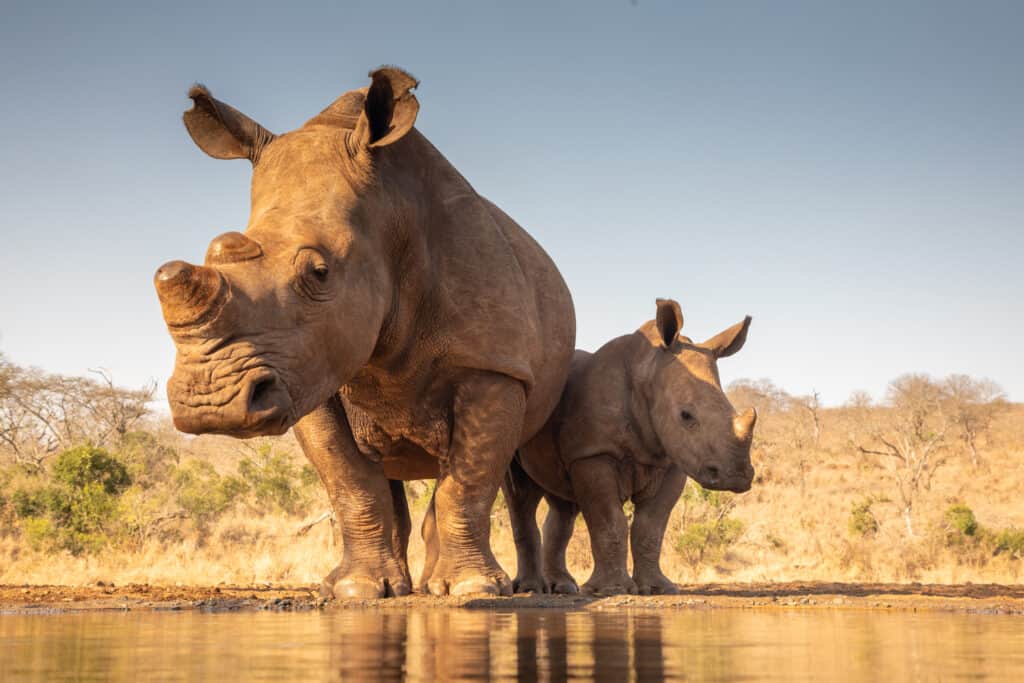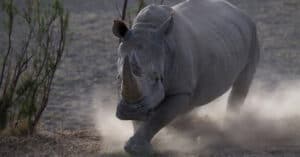Continue reading for our analysis...

Rhinos can reach impressive sizes, weighing over three tons. Although lions hunt rhinos, they’re certainly formidable opponents. In some cases, lions won’t even try to attack a rhino — their size alone can intimidate a whole pride of lions. Watch the video below to see how lions stand down in the face of a towering rhino, especially when it’s surrounded by friends.
What Animals Live In Masai Mara?

Rhinos are among the many animals that call Masai Mara National Reserve home.
©Jurgens Potgieter/Shutterstock.com
Masai Mara National Reserve houses a wide variety of wildlife, from mammals to birds. Some of the most notable mammals include leopards, elephants, buffalo, lions, and rhinos. There are also giraffes, hippos, cheetahs, and zebras. Birds include the African grey hornbill, Abdim’s stork, African fish eagle, lilac-breasted roller, and southern masked weaver.
Aside from the larger mammals, there is a long list of other animals, including aardvarks, honey badgers, dwarf mongooses, pangolins, side-striped jackals, spotted hyenas, warthogs, waterbucks, and vervet monkeys. There are also plenty of wildebeests that enjoy the open grassy plains in the area.
Do Lions Hunt Rhinos?

Lions live and hunt in groups called prides.
©iStock.com/Tommy_McNeeley
Lions are apex predators, able to attack and kill even huge mammals like rhinos. Lions hunt in prides, which is their advantage when facing larger prey. Although they’re a rhino’s natural predator, they don’t usually go after healthy adults. It’s too much of a challenge. Instead, they go for rhino calves and older, sick, or injured rhinos that are already at a disadvantage.
Aside from rhinos, lions typically hunt wildebeests and zebras, but when their food sources are scarce, they turn their attention to smaller animals, sometimes even rodents. They may also let hyenas or leopards do the work of hunting and killing and then swoop in to take their kills.
Rhino Vs. Pride Of Lions
When the video below starts, a rhino is front and center, running up to a pride of lions. The lions seem to be responding in kind, running toward it, but the moment it turns around to face the lions, they run right past it. The cameraman pans to the right, and you see that a couple more rhinos are present. The lions and rhinos are sharing space, pausing and facing one another. Although the lions may feel tempted to turn these healthy adult rhinos into a meal, they seem to understand that it’s just not a good idea to engage. The rhinos are together, and the size difference is enough of a deterrent.
Is It Normal For Rhinos To Defend Themselves?

A rhino is not likely to back down from a fight against any predator.
©Corrie Barnard/Shutterstock.com
Rhinos are powerful animals, capable of defending themselves against predators, including lions. While it is not normal for rhinos to actively seek out a fight with a pride of lions, they are capable of defending themselves in the event of an attack. A rhino’s primary defense is its size and strength. Unlike other animals, rhinos have a thick hide and a large horn that can be used to ward off predators.
In addition to their physical attributes, rhinos also have keen senses that allow them to detect potential threats. When a rhino senses danger, it will often stand its ground and charge its attacker. The rhino’s size and strength can be intimidating to would-be predators, and the rhino may even be able to scare away the predators without having to fight.
Overall, a rhino is capable of defending itself from a pride of lions, although it is not normal for a rhino to actively seek out a fight. Rhinos rely on their size, strength, and senses to detect and ward off potential predators.
How Big Are Rhinoceros?

A mother rhino tends to her baby for over two years.
©iStock.com/PeterVanDam
Rhinoceros are quite large animals found in parts of Africa and Asia. They can grow to be quite large, with a maximum size of up to 6.5 feet tall and 12 feet long. The average weight of a Rhino is around 4,000 pounds.
At birth, a Rhino calf measures around 2 and a half feet long and weighs around 70 pounds. As they grow older, Rhino calves can reach up to 3 and a half feet tall and 200 pounds.
Due to their size, Rhino calves remain with their mothers for up to two years until they are able to fend for themselves. Rhino calves can reach their full size in four to five years.
Rhinoceros are also very powerful animals and can charge at speeds of up to 35 miles per hour. Their sheer size and strength make them formidable animals, and they are a symbol of power and strength.
Thank you for reading! Have some feedback for us? Contact the AZ Animals editorial team.







